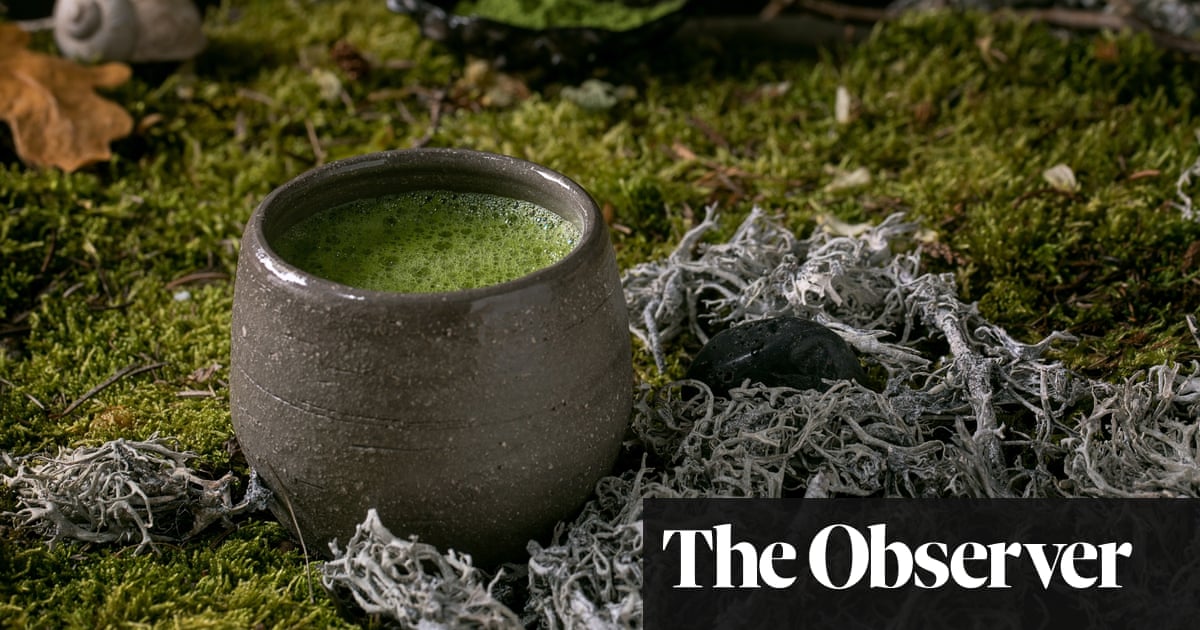The appearance of the vivid-green powder elicits smiles and appreciative sounds, and anticipation among dozens of tea lovers. Their hand-milled batches now ready for whisking with hot water, they will soon be rewarded for their patience.
The foreign tourists attending a matcha-making experience in Uji, near Kyoto in western Japan, are united in their love of the powdered, bitter form of green tea the Japanese have been drinking for centuries, and which is now at the centre of a global boom.
Made from the leaves of the Camellia sinensis plant and originally served, in highly stylised fashion, at formal tea ceremonies by masters of sado – the way of tea – matcha is the flavour profile of the times, the must-have ingredient in everything from lattes and chocolates to ice-cream and boiled sweets.
After the lean years of the Covid-19 pandemic, businesses in Uji, a town known for deep historical ties to the matcha trade, are cashing in.
Buoyed up by record levels of tourism to Japan, restaurants take the matcha theme to its culinary extreme: gyoza and takoyaki drizzled in matcha-infused dressing, and bowls of “stamina” ramen topped with the chlorophyll-rich green stuff. Every cafe is packed on an overcast, drizzly afternoon, as are the family-run shops doing a roaring trade in packets of locally produced tea, colourfully decorated containers and matcha-themed confectionery.
At Chazuna, a park and museum devoted to the town’s tea culture, matcha workshops are fully booked for the next fortnight. Of the 60 people a day who come to make, and then drink, their own tea, about 90% are from overseas.
“We opened in 2021 and for the first two years we didn’t have many visitors,” says Chazuna’s director, Naoto Sakayori. “Then everything changed in March last year and, since August, interest has rocketed. It’s all about matcha, matcha. People think that if they come to Kyoto on holiday, then they absolutely have to come here for a matcha experience. And then everyone posts their photos and videos online.”
Stephen Blackburn, a tourist from New York, was among the first to ride the matcha wave. “I have more or less stopped drinking coffee and now just drink matcha,” says Blackburn, a former barista who started drinking the Japanese pick-me-up eight years ago. “I like the taste and the way it makes me feel. It’s not like coffee. It doesn’t leave me agitated … it makes me more focused.”
But some visitors to Uji are still not convinced. “To be honest, we don’t really like matcha,” says Henrik Hantel, who is honeymooning in Japan with his wife, Tessa. “We tried it in Germany several times and disliked it, but we thought Japanese matcha might be different … and it’s everywhere here, so we don’t have much choice but to try it in its traditional home. We’re going to give it one more go and hope we won’t be disappointed again.”
However, the global appetite for all things matcha is a double-edged sword. Reports of a shortage emerged last autumn, prompting tea companies in Kyoto to impose unprecedented purchase limits on the powder, which has been consumed in Japan since the 12th century after it was introduced by Buddhist monks from China.
Soaring demand in Europe, the US and Australia has prompted warnings of further shortages this year. While consumption of leaf green tea and matcha is declining in Japan, the rest of the world can’t get enough, with the global market in matcha alone expected to surge from $2.8bn [£2.2bn] in 2023 to about $5bn by 2028.
According to the agriculture ministry, Japan produced 4,176 tonnes of matcha in 2023, almost three times the quantity in 2010. Keen to exploit the growing commercial potential, Japan’s government is reportedly planning subsidies to encourage growers to move away from traditional leaf tea, or sencha, and produce more tencha – tea for grinding – the type of leaf that produces matcha.
Official campaigns to spread the word about matcha have been wildly successful. The tea promotion account on Instagram, run by the Japan Food Product Overseas Promotion Centre, has almost 50,000 followers.
This year’s tea harvest, which will start this month, will replenish the matcha supply, but relief will be temporary. Overseas consumption “reached a record high last year”, Fumi Ueki, chief of the Leaf Brand Group, a department of Ito En, one of Japan’s largest tea companies, told the Japan Times.
Inevitably, social media has been a driver of interest. Matcha content is hard to avoid on TikTok, with users pointing to evidence of the health benefits of regular consumption of antioxidant-rich green tea, whose caffeine levels are slightly lower than those in coffee.
While he has been taken aback by the levels of interest in matcha – Chazuna will soon host large groups of British visitors – Sakayori appreciates its aesthetic, even spiritual, appeal.
“It’s not like drinking coffee or English tea,” he says. “It’s about more than the taste… drinking matcha is an experience.”
The march of the brilliant-green powder continues, winning unlikely converts along the way, including Henrik and Tessa Hantel. “We decided to try matcha along with a dessert and, to be honest, it was the best experience we’ve had so far,” they wrote in an email after speaking to the Observer. “I still don’t think we’ll order it back in Germany but it was a happy way to end our matcha experience in Japan.”










